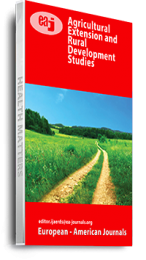Combination of mineral fertilizers and manure has been proposed as the sustainable approach of soil fertility management. This study evaluates the use of these two soil fertility practices. Data for this study was obtained through a survey conducted between January-March 2019 with 106 farmers. Results show that the proportion of farmers who used manure and inorganic fertilizer was 93.4% in each case. About 90% of the farmers used both fertilizer and manure. Farmers accessed fertilizers mostly through direct purchase from the local market (73.9%). Most of the manure is obtained on-farm (84.8%). About 67% of farmers used fertilizer both for planting and top dressing. However, only 20% of the farmers used fertilizer every season. Low income, low literacy, lack of soil fertility management skills, small land sizes, low livestock units, limited and declining capacity of agricultural extension explain the low investment in soil fertility management. Timely delivery of low-cost, high quality fertilizer is of paramount concern. Glaring loopholes undermining the efficiency of the government subsidy program have to be addressed. Farmers’ capacity building is necessary to ensure high quality manure. Policy and institutional support are necessary to reverse the declining capacity of soil science research and agricultural extension.
Keywords: Agricultural Extension, Fertilizer, Soil fertility, Subsidy, declining soil fertility, integrated soil fertility management, manure, sustainable agricultural intensification

